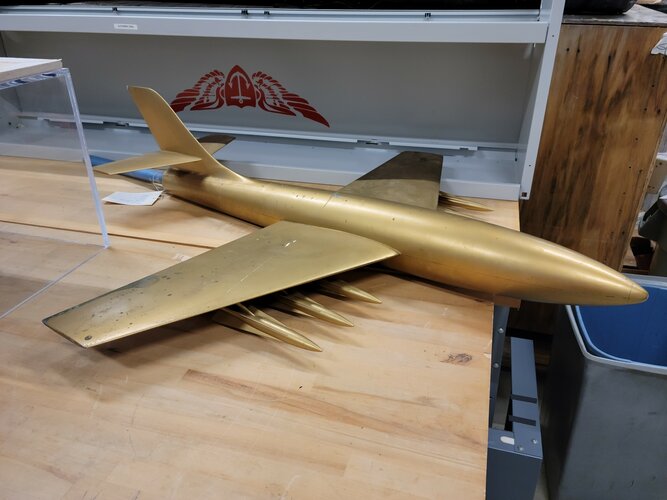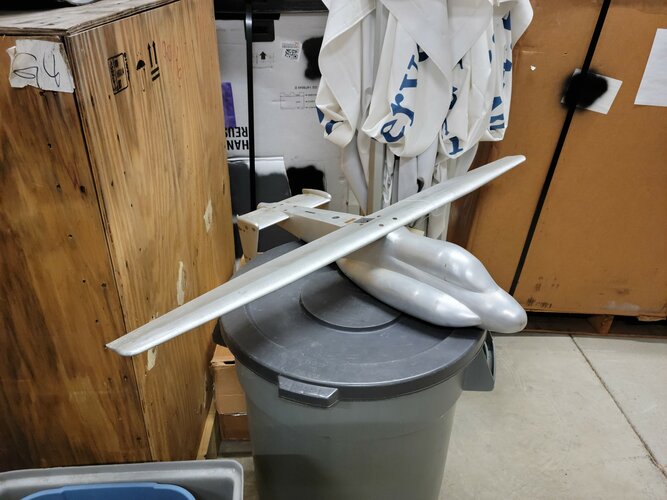Given the loadout of six AAM-N-10 under the wings, I'd agree with Starviking that this comes from the Missileer design studies.
But the lack of a cockpit, engines and intakes is remarkable.
I think this might not represent a particular design, but just a wind tunnel model to further study an effect that was discovered by Vought engineers during the competition (from
OR AD-10501, Fleet Air Defense Fighter):
One of the interesting things out of the competition was a Vought entry which had predicted extremely low missile drag as mounted on their airplane based on wind tunnel tests. What it had amounted to in effect was that they ended up with positive interference drag. Usually you can take the drag of a pylon, the drag of a missile, put the two together and you add another hunk of drag to it for interference. In the case of Vought they were showing that the combination of a pylon and the missiles was less than the total of the two individual drags. Our aero guys didn't believe that and it became a big issue. If they had been right they would have been a more serious contender for getting the award than they were. With our performance estimate they were definitely in second place.
Subsequent to the award to Douglas, Vought turned all their drag data over to Douglas.


